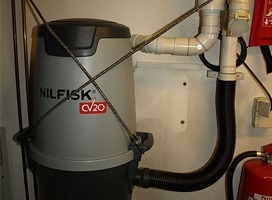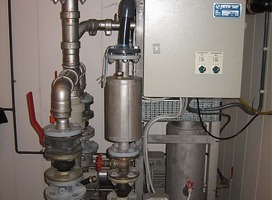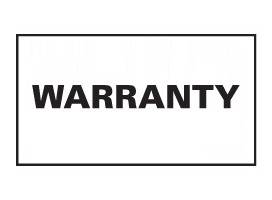If being able to vacuum your house without dragging around a vacuum cleaner is your thing, consider installing a central vacuum system. A central vacuum system eliminates the need to move around a vacuum cleaner from room as you clean. It has a central power unit (which is mounted in the garage, basement or other remote location with enough space) that collects all the dust, dirt and debris like a typical vacuum cleaner. However, its inlets are installed in the walls where you can simply hook up a hose or a wand to start vacuuming.
Central vacuum systems are convenient, but they are not for everyone. It’s easiest to install while the house is under construction. If walls are opened up for remodeling or other home improvements, central vacs can be easily installed, too. Installing it in an existing home is a bit tricky, but more central vacs that can be retrofitted are now getting popular. In any way, whether it’s on a new or existing home, remember that installation must only be done by a professional or a licensed electrician.
Why should I consider getting a central vacuum system?
Besides no longer having to carry around an upright or canister vacuum up and down your stairs, here are some other benefits of having a central vacuum system within your home:
- Central vacuum cleaners are generally more powerful than usual vacuum cleaners. Their motors are generally two to three times more voluminous than motors of typical portable vacuums.
- Larger filters are used, which means more effective air filtration and better quality of air in the home.
- Central vacuum cleaners can save you more money in the long run. It might be more costly upfront, but since it requires almost no maintenance at all, it’s a cheaper choice than canisters or upright vacuums. Buying traditional vacuums may need bags and filters that must be replaced at least once a year or every three to five years, and these can be costly. Plus, typical vacuums may break or fall apart, causing you to buy a new one, Central vacuums are built to last at least 15 years, compared to an average of 5 years of life for a portable upright.
- Installing a central vacuum adds value to your home. Every time you spend on accessories or parts for a central cleaning system, it is going to pay a lot more when you decide to sell the house.
What should I look for in choosing a central vacuum system?
Central vacuum systems vary in brands, sizes and performance. Here’s some factors to consider when choosing a central vac to install for your home:
1. Size of your house
Before you go out and choose a central vacuum system, take an accurate square footage of your home first. The size of your house will determine how much air watts should the unit have to be compatible and powerful enough for your home. A house less than 2,500 square feet needs four hose inlet ports, but if it’s larger, more ports are needed to ensure all areas are accessible by the hose. Be sure to ask your central vac dealer about the air watts of the vacuum they offer and how many square feet can it cover.
2. Performance specifications
As with buying any technological equipment, you need to look at the specs of the vacuum systems for you to have an idea how well can it do in terms of sucking up dirt, dust and debris.Choosing will be easy with the basic understanding of these terms:
- Amps – the amount of electricity the motor uses in operation. This helps determine overall efficiency, but higher amps doesn’t always mean the vacuum is more powerful and efficient.
- Horsepower – the capacity of the motor. Different brands may have different measurements of horsepower depending on motor loads, voltages and temperature variations.
- Airflow – typically measured in cubic feet per minute (CFM), it is the amount of air that flows through the tubing. With no airflow restriction, you can be assured of the maximum performance of the product. However, airflow restrictions won’t be avoided since it includes tubing structure, filters, hoses, bags, cleaning attachments and dust accumulation.
- Waterlift – the suction power of the motor. It indicates how efficient the vacuum is in terms of pulling or sucking dirt and debris off. The waterlift generates airflow, which is needed to pull the dirt through the tubing and into the dust canister.
- Air watts –measure the unit’s power. It can be determined by combining waterlift and CFM or airflow. It’s the best parameter to measure how powerful the cleaning power of the vacuum is.
When checking out the overall performance of a central vac, you have to look at all these elements and combine them for you to get a total picture.
3. Type of vacuum filtration system
After the motor and its specs, the next important thing to consider is the filtration system. Here’s its three different types:
- Bagged – uses a bag to gather debris, just like typical bagged portable vacuum cleaners. It is recommended for houses where outside venting is not possible or preferred. Generally, bags are changed once or twice a year. It’s best to empty the bags when it’s less than three-quarters full, to prevent decrease in suction power.
- Filtered units – may be bagged or bagless; uses a filter to protect motor from getting clogged. Outside venting for this type is also not required. The downsides to filtered units is that it reduces airflow and suction power, and you may have to occasionally clean the filter (which is a dirty job). However, there are self-cleaning varieties so you don’t need to clean it yourself.
- Cyclonic units – tosses and spins around debris at high speeds. Heavier particles settle and stay inside the canister while smaller particles are either exhausted outside the house or stick to a screen that needs occasional cleanup. Because of that, these vacuums need outside venting. It’s best to pick filtered cyclonic units to protect motor and maintain the suction power of the vacuum. Without a proper filter, debris would inevitably get inside the motor over time, reducing suction power and guaranteeing the need for a service call eventually.
4. Noise level
The level of noise produced by a central vacuum cleaner is so much lower compared to a portable one because the power unit is located in a remote place like the garage. Some brands are quieter than others, but there is no standard to measure its specific decibel levels, as other factors like airflow in the setting of your house may affect. The quietness of a central vacuum motor can be best determined by the quality of the motor.
5. Warranty
Like any major purchases, you should be concerned about the length and availability of warranty. It can also determine how efficient and durable a central vacuum is. The best manufacturers will offer extended warranties on their vacuums because they are sure about the superior quality of their product.






